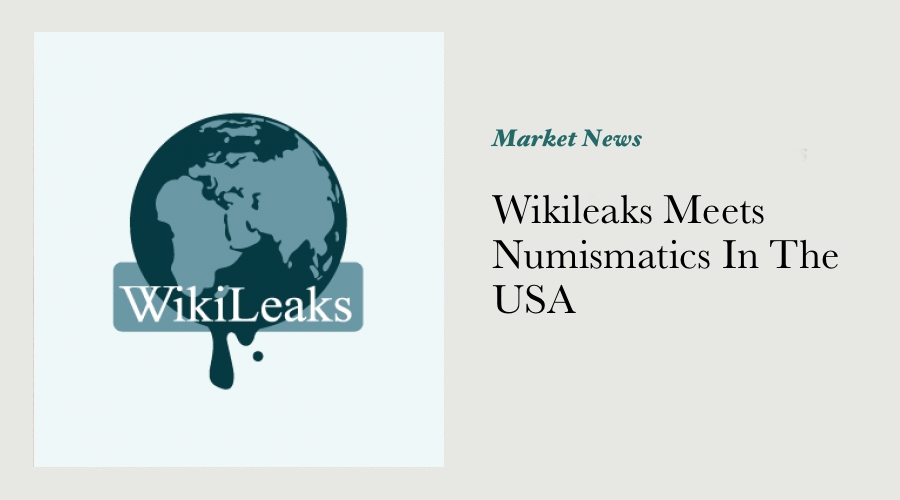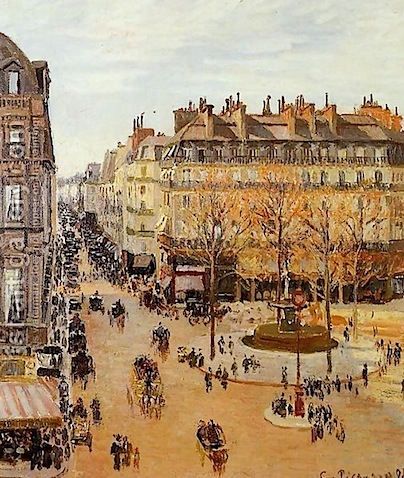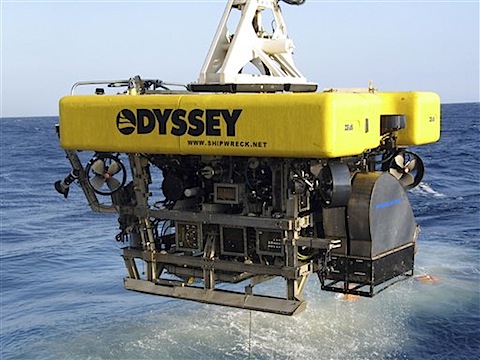Wikileaks Meets Numismatics In The USA

US numismatic trade magazine World Coin News this month features an article covering some of the diplomatic to and fro between the US and Spain over a valuable painting held by a Spanish museum that has an ownership claim over it by a private US citizen, a Mr Claude Cassirer.

The painting in question is entitled "Rue Saint-Honore", is of a street in the 1st arrondissement of Paris, and was painted by the famed Danish Impressionist painter Camille Pissaro, an artist who I understand through my highly rigorous and in-depth research (ie by checking WIkipedia) is considered to be a "father figure not only to the Impressionists," but to all four of the major Post-Impressionists, including Paul Cézanne, Vincent van Gogh and Paul Gauguin". We can take from all of this that the value of this painting is not insubstantial, about US$20 million by some estimates.
Claude Cassirer's family were industrialists and art collectors, and it is Cassirer's claim that his great-grandfather purchased the painting directly from the artist some time in the late 19th century.
With the rise of the Third Reich, Cassirer's family were forced like so many others to flee their homes in Western Europe. Cassirer's grandmother was among the last of the family to leave, and it is claimed that she was forced to surrender the Pissarro to a Nazi official in 1939 in exchange for an exit visa. Her sister did not have as much negotiating power, and was dispatched to a concentration camp.
Records show that the painting was then acquired in the late 1970's by Baron Hans-Heinrich Thyssen-Bornemisza, scion of Germany's Thyssen steel-making empire and himself an avid art collector.
The good Baron had spent much of his life in Spain and had married an ex-Miss Spain for his fifth wife, so in his later years chose to lease his collection to the Spanish government, and finally sold it to Spain in 1993 for the sum of US$327 million. At one stage, this art collection was the second largest private collection in the world (second only to that of the British Royal family).
Since being acquired by the people of Spain, "Rue Saint-Honore" has been displayed in a government-run museum and reproduced for sales and promotions.
Claude Cassirer became aware of the painting's existence again in 2000, and turned to the World Jewish Congress for help in approaching the government of Spain, a signatory to agreements to restore Nazi-looted artworks to their rightful owners. Legal action in the US court system then started in 2005, and has been mired there for the past six years.
So how on earth does all of this have a numismatic connection?
The Guardian newspaper in London was the first to announce that WikiLeaks had posted U.S. diplomatic cables online that impact a dispute between a US company that specialises in recovering shipwreck cargo (Odyssey Marine) and the Spanish government. The cables describe how a U.S. ambassador has been assisting Spain since 2007 to acquire more than 17 tons of gold and silver coins discovered and recovered from Atlantic Ocean shipwrecks (the Black Swan among them) by Odyssey Marine in exchange for assistance in repatriating a single painting to a private U.S. citizen. The Wikileaks information shows that "the U.S. ambassador agreed to provide the Spanish customs with confidential U.S. import documents that Odyssey had filed when bringing the coins to Tampa, in return for cooperation in the effort to repatriate the painting to Cassirer."
The US-based Fox News (always a great source for unbiased facts) quoted Odyssey Marine vice president Melinda MacConnell on Dec. 9 as saying, “We deal with treasure, which is always exciting, but now you have intrigue and international conspiracy,” adding, “The fact that the U.S. government came in the case in support of Spain against the interest of an American company, a publicly traded American company with American shareholders and taxpayers... that is really interesting. And now we can probably understand why they did it and it was politically motivated.”
MacConnell continued, “We were surprised. We knew nothing about this painting. We had some suspicions that there was something fishy going on, because we always wondered why the government was getting involved in this case ... We knew something fishy was going on. We just didn’t know what it was, and we certainly didn’t have any idea that it had anything to do with throwing Odyssey under the bus in exchange for a painting. It really does read sort of like a spy novel.”
Pretty much anyone involved in numismatics has horse-traded before, however the stakes involved in this story, as well as the and scale makes it interesting indeed. There can be no doubt that if it si proven that the Cassirer family was forced to divest the Pissaro painting to Nazi Germany, that they should receive adequate compensation if no the painting itself, however should a US Ambassador be prepared to trade off millions of dollars of assets claimed by a publicly-listed company in order to do so?
It seems diplomacy may not always quite mean what I thought it did:
diplomacy |dɪˈpləʊməsi|nounthe profession, activity, or skill of managing international relations, typically by a country's representatives abroad : an extensive round ofdiplomacy in the Middle East.• the art of dealing with people in a sensitive and effective way : his genius for tact and diplomacy.